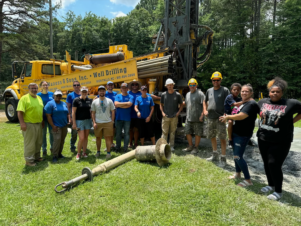Chicago —The American Society of Plumbing Engineers Research Foundation (ASPE RF) has released the long-anticipated results of its study on maximum permitted flow rates through roof drains, co-sponsored by the International Association of Plumbing and Mechanical Officials (IAPMO). The results verified that the sizing method for storm drainage systems, as required in the current plumbing codes, is inaccurate.
Two years ago it was brought to the attention of the ASPE RF that failures with storm drainage systems were commonly occurring, such as roof collapse, flooding of balcony decks, and pipe fitting separation. The ASPE RF conducted a series of tests and found that the flow in storm drainage systems designed to code had the potential to exceed the maximum rate for open-channel flow in stacks and horizontal building drains, creating pressure differentials in excess of those assumed to be present in storm drainage systems.
Armed with this knowledge, the ASPE RF partnered with IAPMO to conduct more detailed tests at IAPMO R&T Lab, a trusted name for independent testing, research, and technical services in the plumbing and mechanical industries, to determine why the roof drains were failing. 60 roof drains donated by various manufacturers were tested, and the results were stunning: the sizing requirements for roof drainage systems in the plumbing codes may be inaccurate by as much as two pipe diameters.
“This is going to change the way we design storm drainage systems,” says ASPE RF President Julius A. Ballanco, PE, CPD, FASPE. “I encourage all engineers and the plumbing codes to reevaluate their methods of design based on the findings of this report.”
Due to its potential impact on plumbing system design, the ASPE Research Foundation Board of Directors voted to make this report available to everyone in the plumbing industry. You may download it at aspe.org/researchfoundation.




Join the conversation: